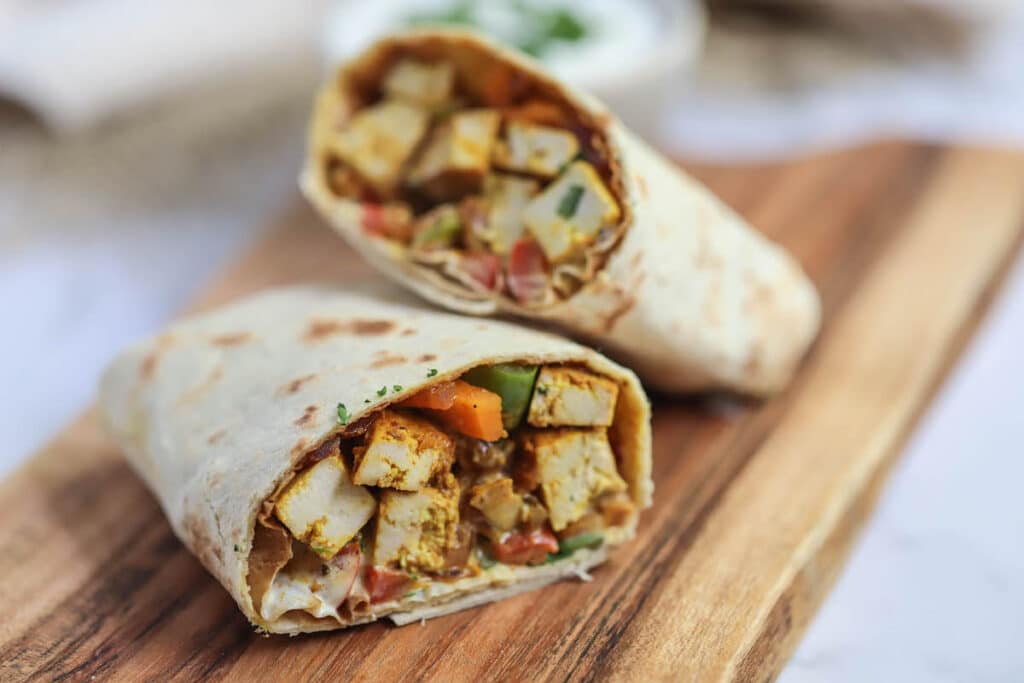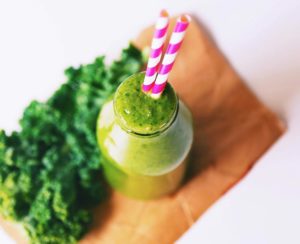If you’ve never tried fajitas – or if you’ve only sampled the takeaway version – you’re in for a treat with these bad boys!
Fajitas are refreshing and filling plus they’re full of phytonutrients, protein, good fat and fibre. All the things and the herbs make them pop.
(Also, you could work with the herb marinade and use it as a paste on other things such as rice or soba noodles.)
Fajitas are relatively high in carbohydrates and you need carbs for cellular energy (especially the brain). Indeed, along with fat and protein, they’re a macronutrient. Of course, you don’t want to go overboard but you don’t want to go too low either. Exercise physiologist Dr Stacy Sims recommends light to moderatively active females have 2.5-3 grams per kilogram of body weight per day. If you’re less active or overweight, Dr Wendy Sweet PhD recommends only 1.1 grams per kilogram of body weight.
However, there’s a lot of fear of carbs but that’s usually referring to ‘refined’ carbohydrates. See below under tortillas.
According to Wikipedia:
A fajita (/fəˈhiːtə/; Spanish: [faˈxita] in Tex-Mex cuisine, is any stripped grilled meat with stripped peppers and onions usually served on a flour or corn tortilla.
Fajita Tortillas
Delicious tortillas originated in Mexico and are flatbreads usually made with corn ‘masa’ or maize.
Store-bought tortillas tend to be made of white flour (hello refined carb) which isn’t great for insulin balance and weight gain. (And so much more!) Therefore, if you can, it’s best to make your own gluten-free version with an alternative flour. Think rice, chickpea, cassava, almond or quinoa.
What’s more, they’re super simple to make. So, once you get the hang of it you can use them in lots of different ways such as salad wraps or, you could slice them up and bake them in the oven to use as chips with guacamole or salsa. Another way to use the chips is as a base for nachos.
NB: if you’ve never used these types of flours they generally come in the same form as wheat flours.
We’ve only tried the chickpea flour for these so far and they were great.
There are a ton of simple tortilla recipes made from these flours online.
Chicken, Fish or Tofu Fajitas
Cook time: 15 minutes
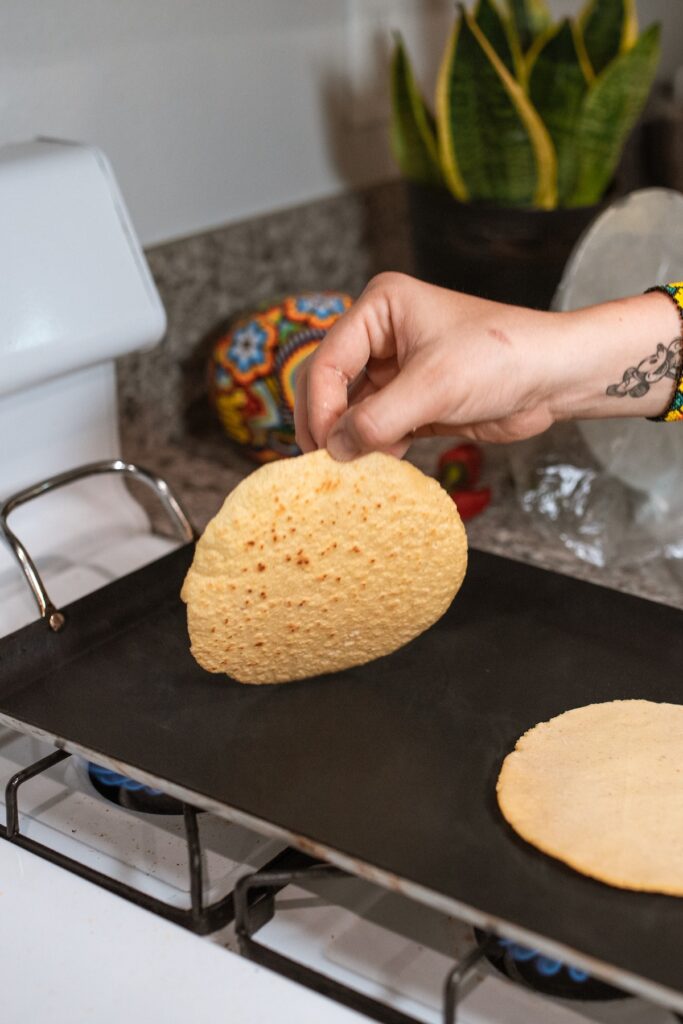
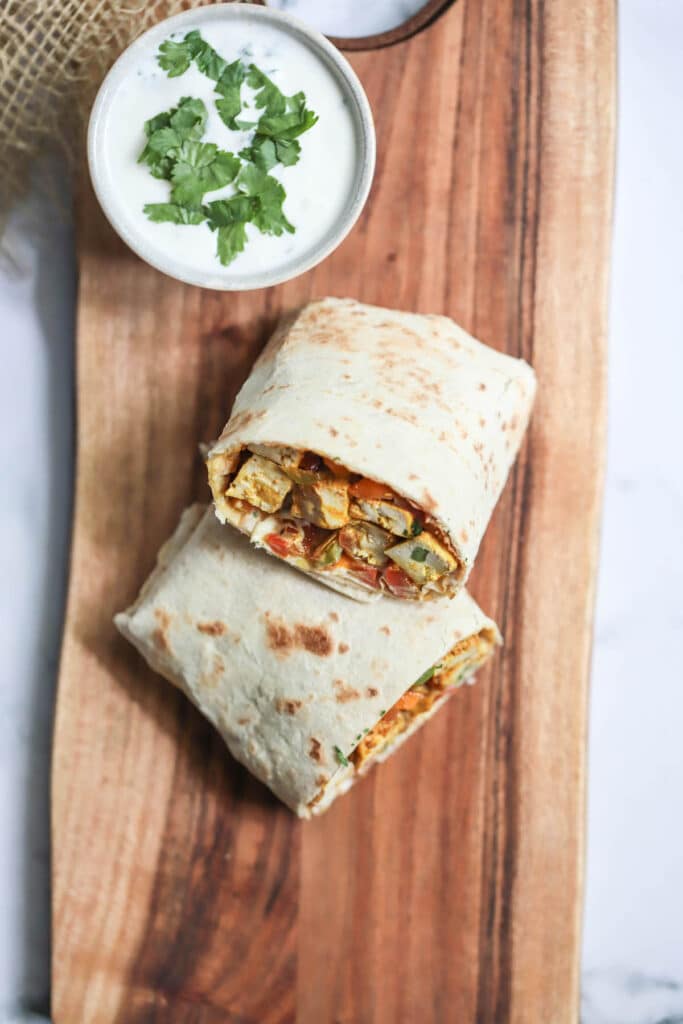
Ingredients:
8 tortillas
The marinade:
- juice of 1 lime
- 1 tsp ground cumin
- 1 tsp paprika
- 1 tsp garlic powder
- 1 tsp onion powder
- 1 tsp dried oregano
- 1 tbsp olive oil
The fajitas:
- 400g chicken, fish or firm tofu, sliced
- 1 tbsp olive oil
- 1 red capsicum, sliced
- 1 green capsicum, sliced
- 1 red onion, sliced
- 1 carrot, sliced
- 1 tbsp tamari sauce
The sauce:
- 3 tbsp yoghurt – dairy if you can tolerate it or plant-based
- 1 tbsp cream cheese – dairy if you can tolerate it or plant-based equivalent
- juice of 1 lime
- pinch salt
- a handful of coriander, garnish (if you don’t like coriander try mint)
Here’s what to do:
- Mix all ingredients for the marinade together in a medium bowl.
- Add in the protein – chicken, fish or tofu.
- Mix well to ensure the protein is evenly covered.
- Heat the olive oil in a large skillet or flat pan over medium-high heat.
- Add the protein to the skillet and cook for 3-4 minutes.
- Add the vegetables and continue cooking for a further 6-7 minutes, until the vegetables are tender.
- Now add in the tamari sauce and mix well.
- In the meantime, place all the sauce ingredients into a small bowl, mix well to combine and set aside.
- Warm the tortillas.
- Assemble the fajitas by dividing the protein and vegetable mixture between each of the wraps.
- Drizzle over the sauce.
- Add any leftovers to a small dish and garnish with coriander or mint to be used as extra sauce.
- Serve immediately.
Nutrition per serve
- Kcals: 435
- Fats(g) 21
- Fibre(g) 11
- Protein(g) 19
- Carbohydrate(g) 45
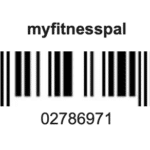
Bon appetit!
Let us know if you make our fajitas. Tag us on Instagram @menome100

